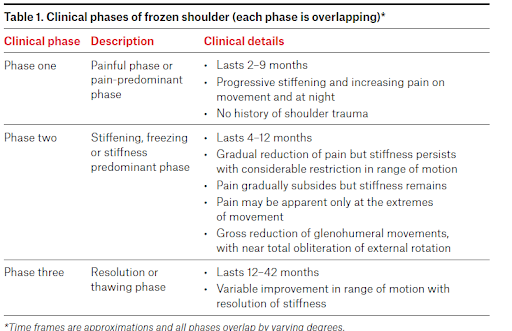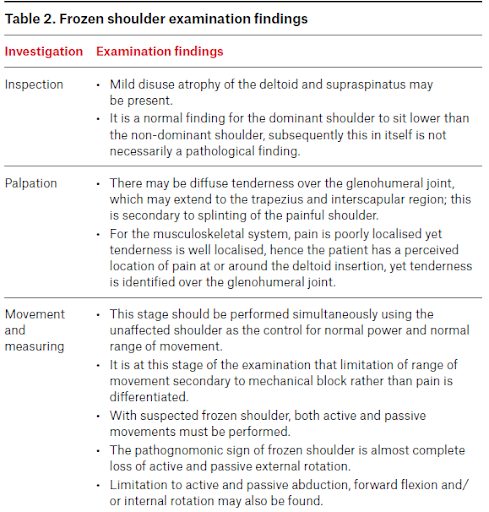Frozen shoulder
Incidence of 3-5% in the general population, 20% in individuals with diabetes.
What is it?
Frozen shoulder: a condition characterized by functional restriction of both active and passive shoulder motion for which radiographs of the glenohumeral joint are essentially unremarkable except for the possible presence of osteopenia or calcific tendonitis
Occurs in 3 stages:

Some clinical examination findings to help clinically diagnose frozen shoulder

- Frozen shoulder is predominantly a clinical diagnosis.
- Most imaging modalities and pathology testing that aim to confirm the diagnosis are usually unhelpful and may result in the wrong diagnosis being made
- Confirming that external rotation is not possible with both active and passive movement is important in making the diagnosis
- Shoulder shrug sign: inability to lift the arm to 90° abduction without elevating the whole scapula or shoulder girdle
Brun, S. P. (2019). Idiopathic frozen shoulder. Australian Journal of General Practice, 48(11), 757-761. Retrieved from http://ez.library.latrobe.edu.au/login?url=https://www-proquest-com.ez.library.latrobe.edu.au/scholarly-journals/idiopathic-frozen-shoulder/docview/2313329641/se-2?accountid=12001

